
Additive Construction
M A T E R I A L S - P A R T O N E
The example above shows how the mish-mashing of a few simple shapes can quickly start to form the complex objects we see in day-to-day life. We'll come back to all this mish-mashing in the next element. First, let's make sure we understand how these simple, three-dimensional shapes are represented on two-dimensional surfaces (paper, monitors, TV screens, etc.).
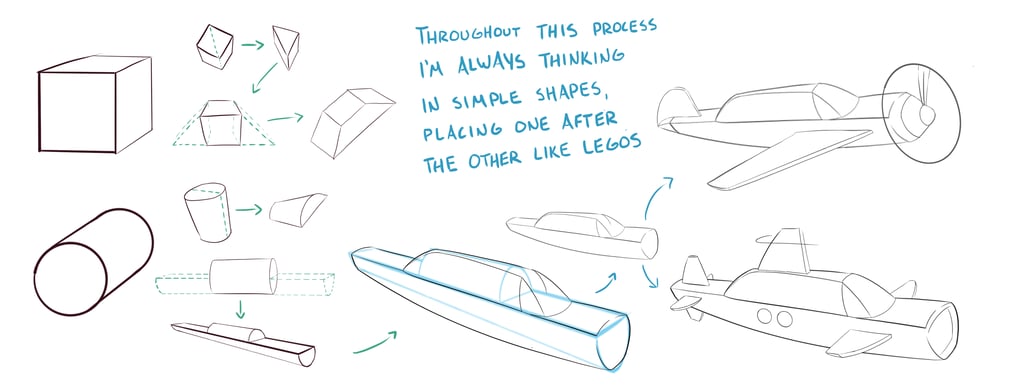

W A T C H V I D E O
If you'll recall, in part two of element one, I demonstrated how perspective affects flat, 2D shapes like paper. Let's expand on that knowledge and explore the third dimension.
Perspective - The Three Dimensions
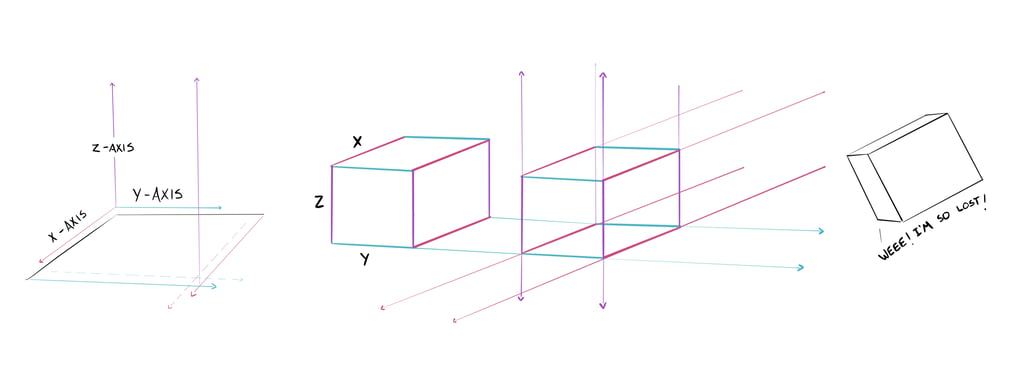

A two-dimensional shape has two underlying "axis," known as the x and y-axis. Meanwhile, 3D shapes have a third axis, the z-axis. You might recognize these as math terms because art, in a sense, is just geometry taken to an extreme. We won't be doing any actual geometry here but we can use these terms to better understand how a shape behaves in space.
For starters, lines on the x-axis will always, always, always head in the same direction. Same with lines on the y-axis and lines on the z-axis.
In this example, we can see that the y-axes of the colored boxes are perfectly aligned. This gives us the impression that the boxes exist within the same space and are most likely on a flat, level surface--like the floor. The black box, on the other hand, looks out of place.
Each part of a lesson will have at least one technical exercise and one creative exercise, sometimes more. The idea isn't to execute these exercises to perfection. Do them to the best of your ability and move on to the next part. You'll have plenty of opportunities to improve your line quality in later exercises. All of these exercises should be done TRADITIONALLY unless stated otherwise. I make most examples digitally to keep the website looking clean and speed up the time it takes to make lessons.
Assignments
Technical
Creative

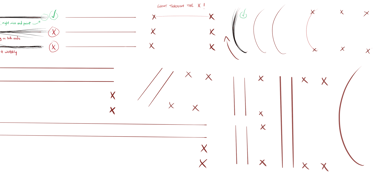
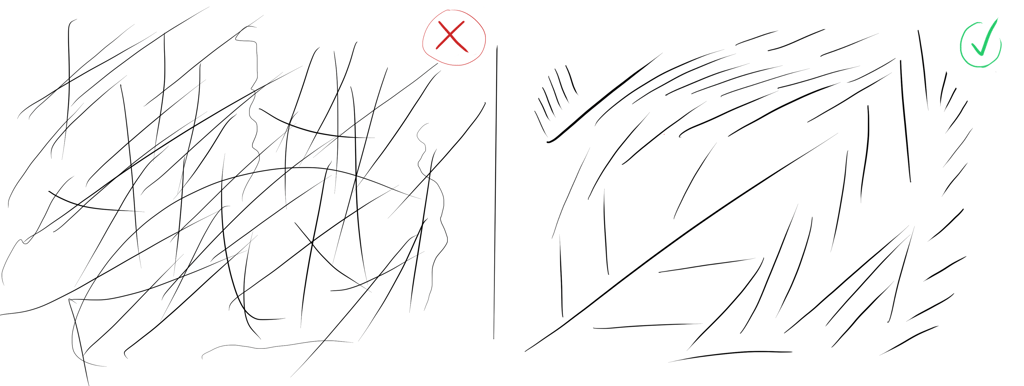

Boxes on a Grid
Mindless 50
Real simple, put down one line and then go over that same line 7 times. Feel free to use this layout or make your own, but make sure to have varying lengths & some curves in there. You can use a straight-edge for your first few beginning lines. Practice ghosting your first line as well! Use X's to mark your points like outlined below. Think. Ghost. Execute.
The goal is to have all 7 lines match each other as close as possible.
Draw 50 random lines that don't touch each other. That's it. Don't think about where to place them. Let them land wherever they land. Oftentimes, great ideas come from the most random places.

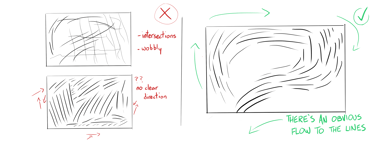
Within a "frame" draw 50 lines that don't touch each other and also create some visual interest. The way the lines are placed should lead your eyes around the frame somehow. Left to right. Corner to corner. Towards the center. Up to you.
Leading 50
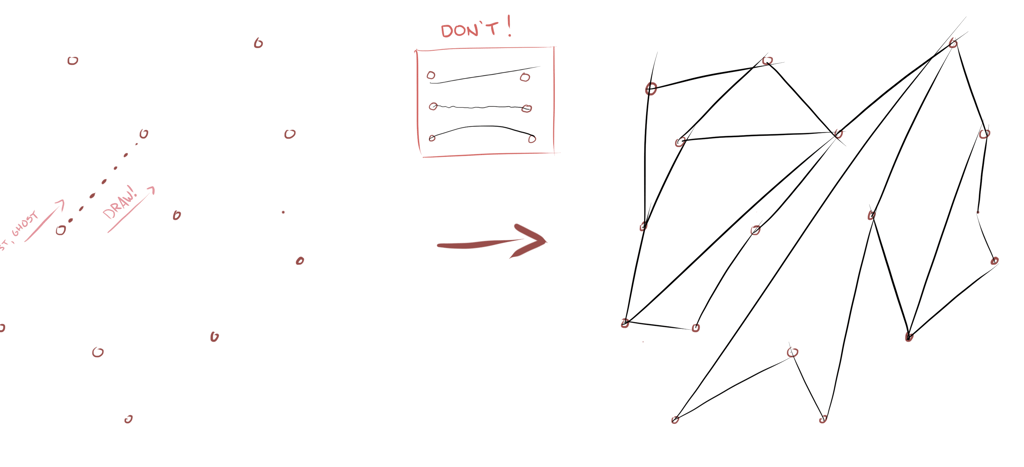

Ghosted Lines
Scatter 16 dots (or more) all over an empty page. These dots will represent start and end points.
Using the ghost method, connect all the points together. Again, we're focused on getting smooth & confident lines that are made with the full extent of our arm. WORK OUT THOSE SHOULDERS!


